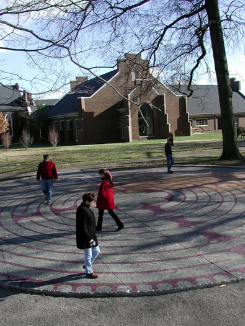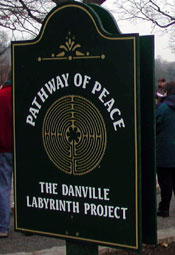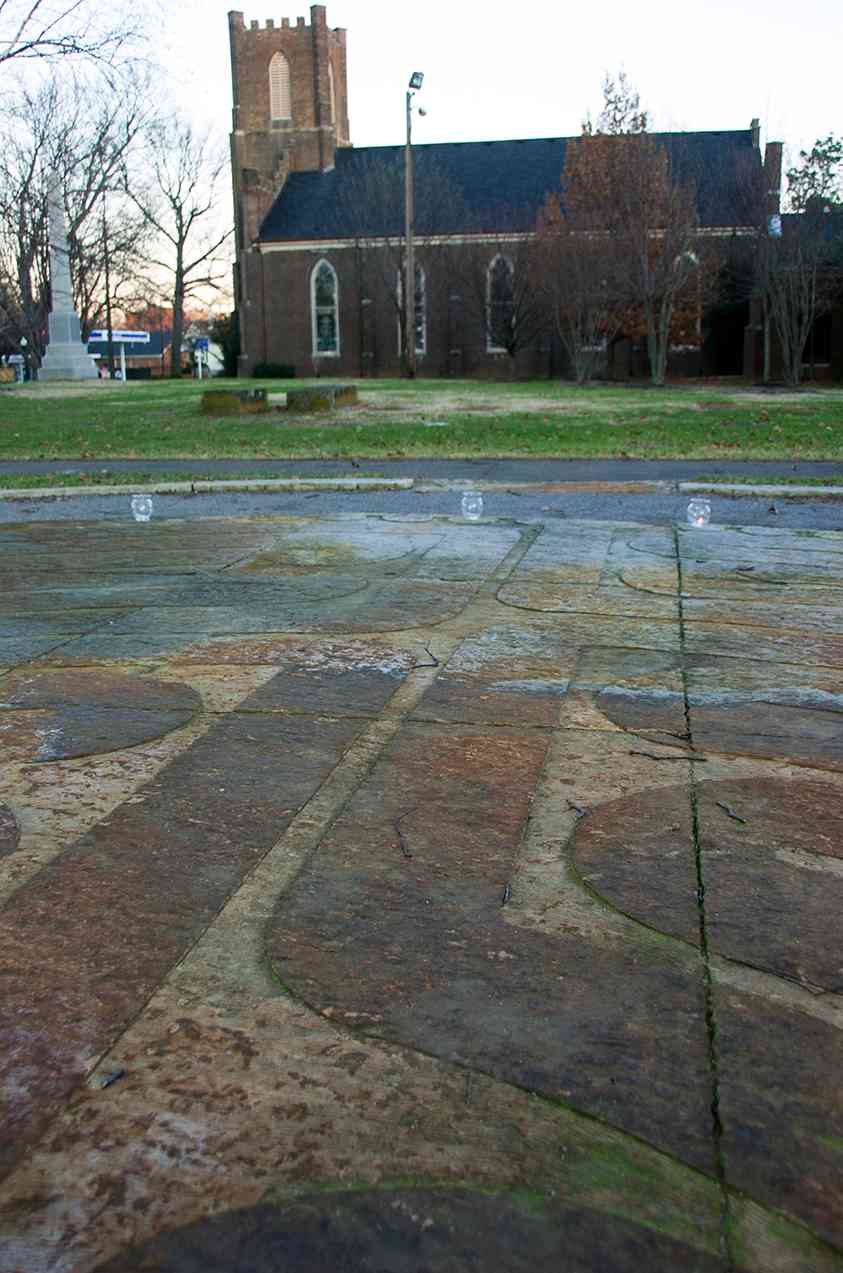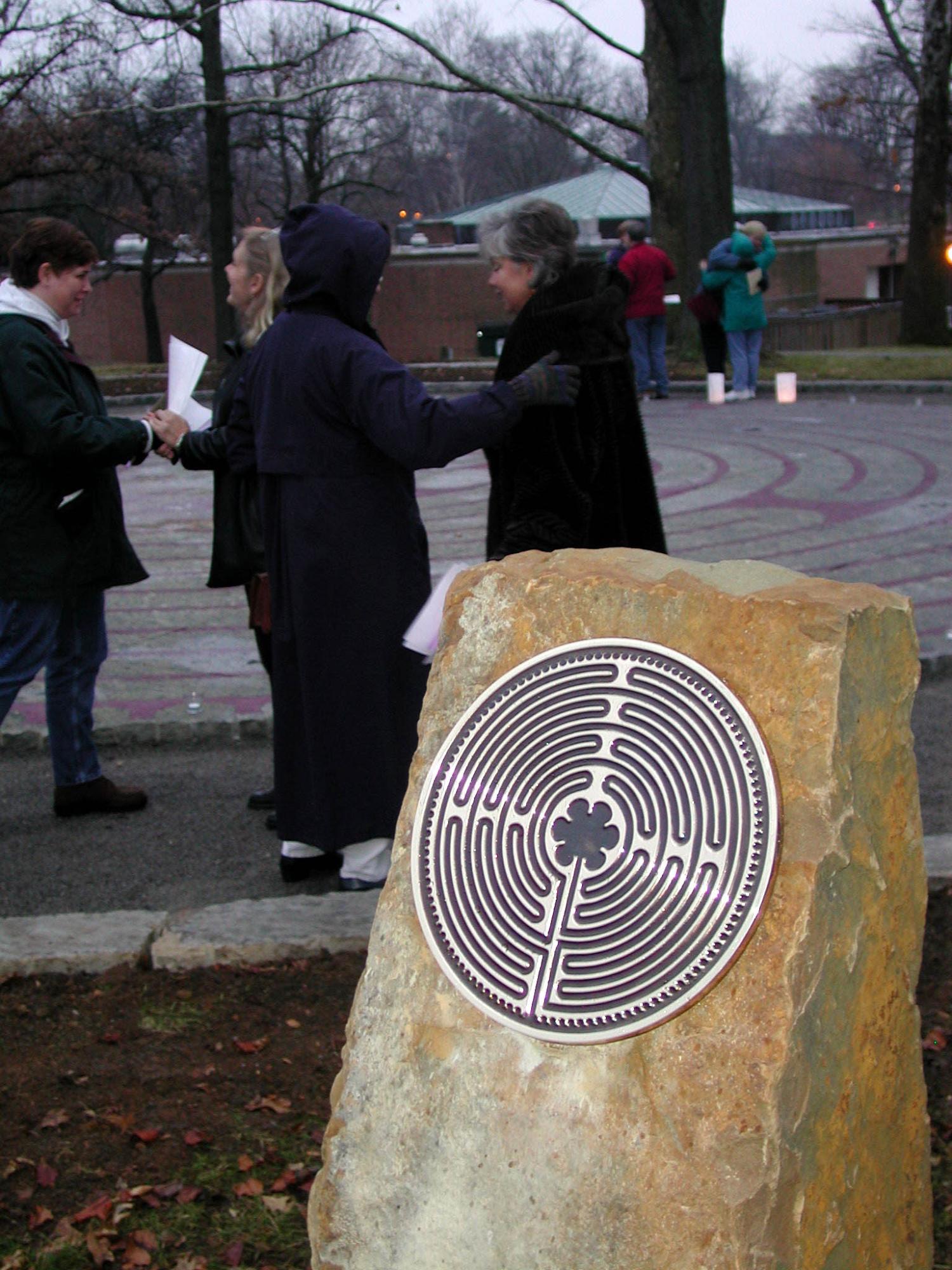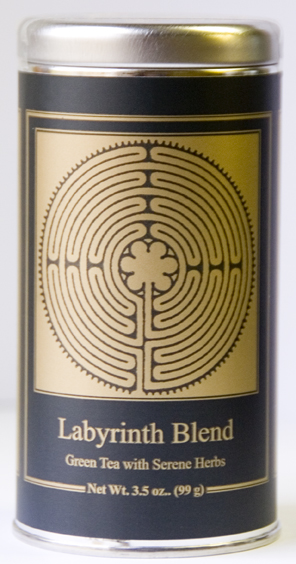Pathway of Peace
The Danville
labyrinth
What is a labyrinth?
A labyrinth is a design consisting of a single continuous path from an entry point to a central goal that twists, turns, and folds back on itself—the longest possible distance between two points. The simple spiral is an example, but humans have been inventing their own ever more elaborate examples for thousands of years. Labyrinthine designs appear among the artifacts left by cultures from the ancient Greeks (the legendary Minotaur lived in one) to prehistoric Native Americans and the Celts.
Though the dictionary definitions are virtually identical, most people distinguish a labyrinth from a maze, which has branches that force the visitor to choose which way to go next. Mazes are puzzles, designed to challenge and even frustrate. But the labyrinth, with its one clear path, is meant to calm and focus the mind. By the Middle Ages, labyrinths were a feature of many churches, and pilgrims walked them as an act of devotion.
Recent years have seen a resurgence of interest in labyrinths in America and around the world, with churches, hospitals, community organizations, and even private individuals making them available for modern-day pilgrims. Many of the new examples take their design inspiration from the most famous of the medieval labyrinths: the one cut into the stone floor of France’s Chartres Cathedral.
LABYRINTH TEA
This site is sponsored by Elmwood Inn Fine Teas located at 135 N 2nd Street in Danville, Kentucky's premier tea importer/blender and the maker of Labyrinth Blend Green Tea with Serene Herbs.
